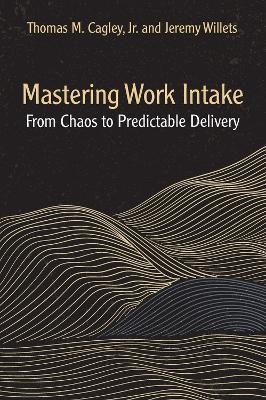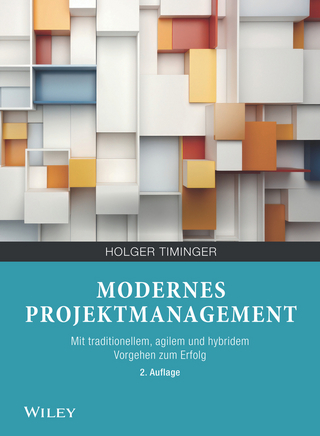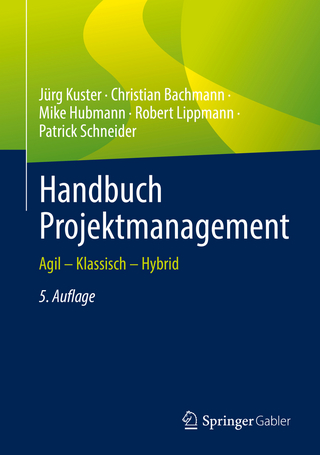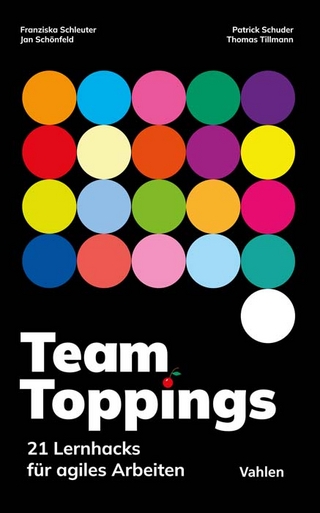
Mastering Work Intake
J Ross Publishing (Verlag)
978-1-60427-200-0 (ISBN)
- Titel nicht im Sortiment
- Artikel merken
Regardless of whether you’re creating, enhancing, or maintaining software products, work intake is a challenge you deal with constantly. Doing the right work at the right time can make or break your project, and there are surprisingly few resources to show you how to manage this process effectively. You need to know what your team is executing, what work is next, and the skill sets required to do the work.
Mastering Work Intake: From Chaos to Predictable Delivery focuses on the full pipeline that work follows as it enters and exits your organization, including the different types of work that enter at different levels and times. It is a must-read for agile coaches, Scrum Masters, product owners, project and portfolio managers, team members, and anyone who touches the software development process. Mastering work intake involves recognizing that it’s easy to say “yes” and much harder to say “no.”
Thomas M. Cagley, Jr. is a consultant, speaker, author, coach, and agile guide who leads organizations and teams to unlock their inherent greatness. He has developed estimation models and has supported organizations developing classic and agile estimates. Tom helps teams and organizations improve cycle time, productivity, quality, morale, and customer satisfaction, and then prove it. Jeremy Willets is a coach, speaker, and author who has spent the last decade working with people and teams to achieve greatness in the workplace. He started out as a technical writer on a Scrum team and quickly fell in love with Scrum and the Agile Manifesto values and principles. Since then, he’s served thriving organizations as a Scrum Master, agile coach, senior agile coach, release train engineer, people manager, and mentor.
Section One – Work Intake
Section One Introduction
Chapter 1: What is Work Intake? A Simple Example of Work Intake in ScrumWork Intake and AgileEnd-of-Chapter Questions
Chapter 2: What Does Good Work Intake Look Like? Introduction Nine Core PrinciplesEnd-of-Chapter Questions
Chapter 3: Basics of Work IntakePush vs. Pull Story-Driven vs. Interrupt-Driven Utilization Maximization Fallacy Flow The Happy Path End-of-Chapter Questions
Chapter 4: Who Cares About Work Intake? Executives Customers Internal Stakeholders End-of-Chapter Questions
Chapter 5: Three Levels of Work Intake Organization Level Work Intake Middle-Level Work Intake Team Level Work Intake Hierarchy and Fatalism: A Caution End-of-Chapter Questions
Chapter 6: Work Intake Anti-Patterns: When Work Intake Goes Wrong Disrupted Work Everything Else is Late Reduced Trust Leadership and TrustLack of Safety Everything is Started, Nothing is Done Herding End-of-Chapter Questions
Section One Conclusion
Section One Introspection A Work Intake Case Study as a Business Novella
Chapter 1: Executing New IdeasSection Two – Work Intake Basics: Prioritization and Sequencing
Section Two Introduction
Chapter 7: Prioritization Priority Why We Prioritize What is a Priority? End-of-Chapter Questions
Chapter 8: The Who, When, and How of Prioritization Who Participates in Prioritization When to Prioritize How to Prioritize End-of-Chapter Questions
Chapter 9: Prioritization at All Three Levels Prioritization and Work Intake End-of-Chapter Questions
Chapter 10: Prioritization Anti-Patterns“ I can’ t prioritize between these items.” “ That’ s a high priority.” “ What’ s the next thing on the priority list?” “ Everything is a high priority.” Prioritization Anti-Patterns ConclusionEnd-of-Chapter Questions
Chapter 11: SequencingWhy We SequenceWhat is Sequencing? End-of-Chapter Questions
Chapter 12: The Who, When, and How of Sequencing Who Participates in Sequencing When to SequenceHow to SequenceEnd-of-Chapter Questions
Chapter 13: Sequencing at All Three LevelsSequencing and Work Intake Approach to Sequencing End-of-Chapter Questions
Chapter 14: Sequencing Anti-Patterns“ That work isn’ t in our backlog of product work. It’ s in our backlog of technical work.” “ That’ s not on our backlog.” “ We’ re going to need to do that work eventually, so let’ s just do it now.” End-of-Chapter Questions
Chapter 15: Prioritization and Sequencing — Related but Different End-of-Chapter Questions
Section Two Introspection A Work Intake Case Study as a Business Novella
Chapter 2: Executing New Ideas
Section Three – Work Intake Visualization: Metrics That Matter Section Introduction
Chapter 16: Flow Defining Flow Why a Definition is Important Four Common Attributes of Flow End-of-Chapter Questions
Chapter 17: Flow Metrics Introduction Flow Metrics Basics Basic Metrics of Flow End-of-Chapter Questions
Chapter 18: Flow Metrics Palette Dashboard Metrics End-of-Chapter Questions
Chapter 19: Flow Metrics at All Levels Organization Middle Management Team End-of-Chapter Questions
Chapter 20: Metrics Anti-PatternsStory Points (As Throughput and/or Velocity Measures) Measuring IndividualsTeam vs. Team The Data is the Whole Story Measuring Everything (or Nothing)Inconsistent Measurement Definitions Measuring Hours (and Estimating in Time) Measuring the Wrong Thing (And Believing It’ s Right)Metrics Fire DrillsLocal OptimizationThe “ Tragedy of the Commons” Time vs. Productivity End-of-Chapter Questions
Section Three Introspection A Work Intake Case Study as a Business Novella
Chapter 3: Executing New Ideas
Section Four – Work Intake Problems and Solutions
Section Introduction
Chapter 21: The Primary Causes of Work Intake Problems Cause #1: Goal Conflict Cause #2: Need Outstrips Supply Cause #3: Pay Practices Cause #4: Project Thinking vs. Pr
| Erscheinungsdatum | 02.02.2024 |
|---|---|
| Sprache | englisch |
| Maße | 152 x 229 mm |
| Gewicht | 272 g |
| Themenwelt | Mathematik / Informatik ► Informatik |
| Wirtschaft ► Betriebswirtschaft / Management ► Projektmanagement | |
| ISBN-10 | 1-60427-200-7 / 1604272007 |
| ISBN-13 | 978-1-60427-200-0 / 9781604272000 |
| Zustand | Neuware |
| Haben Sie eine Frage zum Produkt? |
aus dem Bereich


